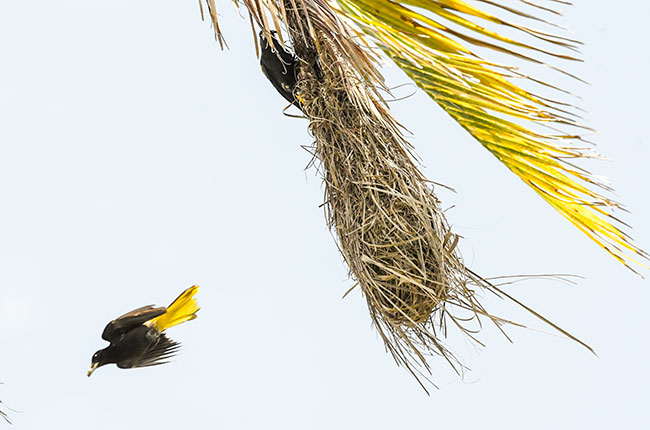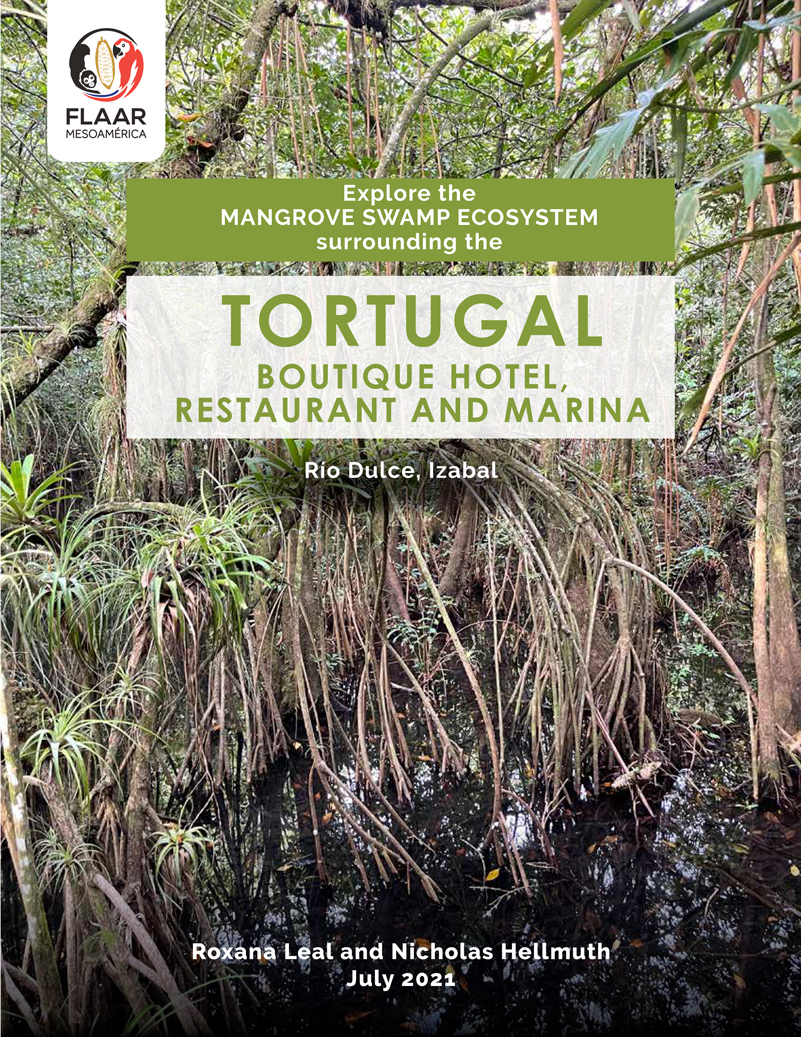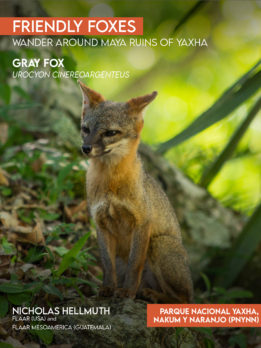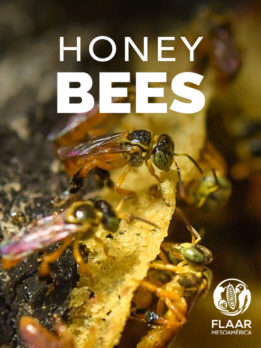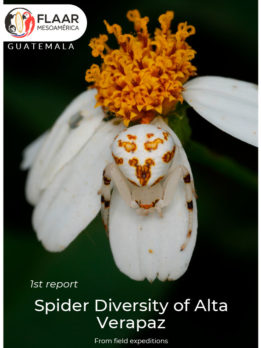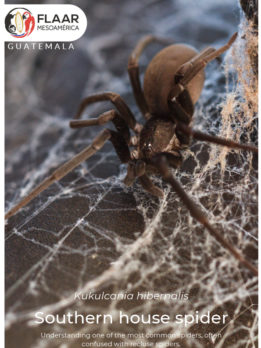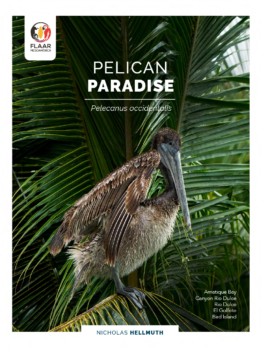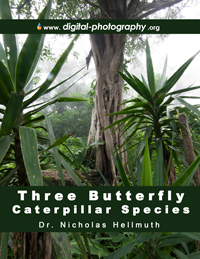Yellow-winged Caciques, Cassiculus melanicterus, synonym Cacicus melanicterus
The nests are caciques are larger (taller) than nests of most orioles. Cacique nests are potentially larger than Chestnut-headed Oropendola (so only a bit shorter than Montezuma Oropendola). Since these nests are impressive engineering achievements of these birds, we were very pleased to find lots of cacique nests near the Pacific Ocean coast of Guatemala. Yet more than half the web sites and most bird-watching guides do not (yet) list the Yellow-winged Cacique for the middle of the coast (closer to El Salvador than to Mexico).
Have we established a new sighting for Yellow-winged Caciques, Cassiculus melanicterus?
The reason I mention the presence of Yellow-winged Caciques, Cassiculus melanicterus, here in Monterrico is because Wikipedia claims that this bird is only found on the coastal area of Guatemala close to Mexico. Monterrico is not a location that I would consider as close to Mexico.
The Mexican cacique or yellow-winged cacique (Cassiculus melanicterus) is a species of cacique in the family Icteridae. It is found only on the west coast of Mexico and the northern-most edge of Guatemala. (Wikipedia, downloaded June 10, 2017).
Several other respected web sites have the same statement: that these birds are coastal Mexico and barely into Guatemala.
This statement is most likely taken from Jaramillo and Burke 1999: 153ff). But once you read through to page 154, you see a comment that “There is now a disjunct population near La Avellana in Guatemala.” It turns out that La Avellana is just upriver from Monterrico, at the Embarcadero La Avellana, where you put your car on a ferry to take you down the canal 30 or so minutes to Monterrico. So Wikipedia needs to be updated, but now primarily from our June 2017 observations, since this is a recent sighting.
And, if the Yellow-winged Caciques, Cassiculus melanicterus is here in Monterrico, I would ask why might it not be further south? Now that we have found the cacique in Monterrico, not sure that “disjunct” is the appropriate jargon for their presence in La Avellana.
So this is a great opportunity for zoology students of Guatemala and El Salvador.
As I suspected, we were by no means the first to find the yellow-winged cacique in the middle of the southern coast of Guatemala: the bird web site www.hbw.com says: Distribution: W Mexico from Sonora S along Pacific slope to Chiapas, extending inland along Balsas drainage to SW México; also S Guatemala and El Salvador.
www.hbw.com/species/yellow-winged-cacique-cassiculus-melanicterus
So my estimate was correct in two aspects: if it’s near the Mexian border and then we find it in the middle of the coast, surely it will also be present in El Salvador. Next step: do bird-watching in the next country south to see if the yellow-winged Cacique is present in the tiny bit of Honduras and then Nicaragua? But we do bird watching primarily in Guatemala (since there are so many species here that we don’t have funding to search all of Central America. But the point is: that a book on birds of “Mexico and Central America” or “The Icterids” written almost 20 years ago should gently be updated.
So how did we find a bird that “was not supposed to exist in this part of Guatemala?”
Whenever we need to find a particular bird species we telephone, Skype, e-mail, or WhatsAp the dozens of contacts we have around Guatemala. We telephoned Alex, one of the guides of CECON turtle, caiman, and iguana rescue center in Monterrico. He said there were several nests in the area where he was familiar with (Canal de Chiquilumilla, Pacific coast of Gutaemala).
We got to Monterrico and soon realized that here was one of the largest concentrations of Yellow-winged Caciques in Mesoamerica: there were nests in so many palm trees. Even though each tree had only one nest, there are so many palm trees in Monterrico that I estimate there were easily ten or more nests in just two city block area.
No colony (at least never more than one nest per tree)
Evidently colonies have been found of the Yellow-winged Cacique by ornithologists elsewhere. But so far, I have not seen a colony of cacique nests in Monterrico area, Guatemala. However there are so many Cacique birds within an area of 100 x 100 meters, that perhaps you could consider all the birds together as a special kind of colony. However there was only one-bird-per tree. Perhaps because palm trees are not ideal to having a dozen nests hanging from a single tree!
Local names for yellow-winged Cacique
The first thing to learn about local names for any plant or animal in Mexico or Mesoamerica is that different parts of the same country may have different names. And a university professor may use a different common name than a farmer in a remote area. Plus for birds such as orioles and their relatives, they all look so similar that local people don’t really distinguish them.
Chorcha is clearly the most common name for orioles.
Oropendola is obviously a common name for the two species of oropendola of Mexico and Central America.
But in Monterrico some local people (who lived in houses below the nests) called the birds chorchas; some called them oropendola; some named them chiltote. Chilote turns out to indeed be a generic word for some birds of this family: can be called either chorcha or chilote.
http://areasyparques.com/peligroextincion/aves16/
So Chilote is a chorcha, or oriole. Thus we still need to get better identification of a local name by individuals who realize that this bird is NOT an oriole (and definitely not an oropendola) (even though the nest is almost identical, albeit that of oropendola may sometimes be a tad larger).
Nest are estimated to be about 65 cm high
All nests were pretty much a comparable size, though some may be smaller. However the one that was considerably smaller could have been an oriole nest (but it was 10 meters from several trees each with one Yellow-winged Cacique nest).
To get an accurate measurement we would obviously need to measure them physically. But I doubt any were over 80 cm high. Still, that is larger than most orioles and pretty much the size of Chestnut-headed oropendola nests. The yellow-billed cacique (of Belize and nearby there) has a cup-shaped nest, not a pendant nest.
In one nest two Yellow-Winged Cacique birds were on the nest at the same time
I estimate these were one male and one female but I doubt the photos have enough detail to document that fact. But at least one bird came and went more often than the Altamira orioles of Chiquimula last month. One difference may be that the Yellow-singed Caciques are nesting in people’s back yards so are accustomed to people (and to their music, cars honking, etc).
In distinction, the Altimira orioles on the road outside Chiquimula were very skittish about four of us being under their nesting tree. H2 heading Identifying the bird in Monterrico as the yellow-winged Cacique To be sure of the identify of these birds we sent snapshots to Alejandro Sagone, a respected ornithologist and guide for people interested in bird-watching in Central America. His reply, “Birds you sent pictures are definitely Yellow-winged Caciques.”
I will admit that I could not see the crest that this cacique has on its head
Several photos on the Internet picture the fancy crest over the head and above the top of the neck of this bird. But when photographing the Yellow-backed Cacique, I must say that I did not notice it until I enlarged the photos on my computer.
Might one modify the suggestion that this cacique prefers “dry forest lowlands”?
Monterrico has a definite web season, though since this wet season is precisely in May and June, perhaps I noticed the rain more than I remember the dry aspect (since morro and jicaro trees tend to favor dry areas; there are tons of Crescentia trees on the drive from Taxisco (Santa Rosa department) to Monterrico.
Why study cacique birds in Guatemala?
Cacique birds are relatives of orioles and oropendola. Both species of oropendola and several species of orioles have nests the same pendant size and shape as the well known nests of Montezuma oropendola.
We are making an annotated tabulated list of every bird nest which is similar to the pendant nest pictured in the very early Maya murals of San Bartolo, Peten, Guatemala. David Stuart and Peter Stuart have correctly pointed out that the birds of San Bartolo are clearly neither of the two species of oropendola.
My interest is to find all species of birds which make these impressive hanging nests, and try to figure out why the Maya did not focus on the even larger and impressive colonies of oropendola nests. And, since the bird in the murals is an oriole, where does this oriole live? Books on birds of Tikal do not feature the species that has been suggested for San Bartolo (which is not a neighbor of Tikal but is not that far away).
Since there are thousands of mangrove trees within an easy flight from Monterrico, that may also make the cacique happy here. Plus there are mango trees everywhere. Although mango trees are not native to Mesoamerica, the local birds have come to enjoy eating them.
First Posted June 2017


